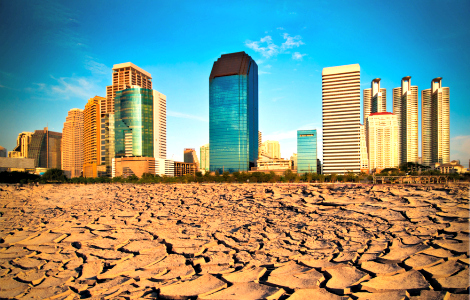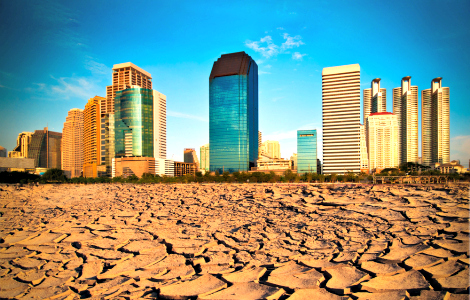If you were to go to Congress and say, “Hey, Congress. I know a way to stem significant drags on the nation’s productivity,” they’d probably say, “Great, let’s hear it.” And then you’d say, “Let’s work to fight climate change and limit the number of droughts the country experiences,” and they’d tune out as soon as you said “climate” and go back to tallying their checks from oil companies.

From the Bureau of Economic Analysis [PDF]:
Real [gross domestic product (GDP)] increased 2.0 percent (annual rate) in the third quarter of 2012, following an increase of 1.3 percent in the second quarter. …
BEA’s GDP estimates reflect the effects of this summer’s extreme hot weather and drought in the Midwest on farm production. For the most part, these effects are embedded in the regular source data that are used by BEA. When the source data do not completely reflect the effects of the drought, BEA attempts to supplement these data, applying methodologies similar to those used in the past. While the drought could indirectly affect many components of GDP, such as personal consumption expenditures and exports, it is only possible to separately identify its effects on a few components, such as the change in farm inventories.
Adjusting for inflation, the change in farm inventories subtracted 0.42 percentage point from the third-quarter change in real GDP after subtracting 0.17 percentage point from the second-quarter change.
Emphasis added. We noted the second-quarter GDP drag last month; the slowdown this quarter was even more significant.
In short: Without the drought, the economy would have grown at about 1.5 percent in the second quarter and 2.4 percent this quarter. With the drought? 1.3 percent and 2 percent. That’s a hit of about 15 percent. With a GDP of $15.094 trillion last year, those fractions of a percent amount to $86 billion in economic damage — using last year’s smaller GDP figure!
And that’s only considering direct agricultural effects. There certainly exists a halo of indirect damage that isn’t accounted in that economic loss.
One thing worth noting from the BEA analysis. Here’s why the economy grew:
The acceleration in real GDP in the third quarter reflected an upturn in federal government spending, a downturn in imports, an acceleration in consumer spending, a smaller decrease in inventory investment, an acceleration in residential fixed investment, and a smaller decrease in state and local government spending that were partly offset by downturns in exports and in nonresidential fixed investment.
This is obviously wrong, since everyone knows that government spending can only hurt the economy.
As Brad Plumer notes over at Wonkblog, more global warming means more future drought.
This 2011 review paper (pdf) by Aiguo Dai of the National Center on Atmospheric Research offers more detail about what’s expected to happen in North America if global warming continues apace. Rainfall won’t go away. In parts of the Midwest, it will even increase. But warmer air temperatures and increased evaporation are expected to dry out soils and make persistent droughts more likely in the next 20 to 50 years. …
If those predictions pan out–and if this year’s data is anything to go by–severe droughts could potentially put a troubling dent in the U.S. economy in the decades ahead.
Climate change isn’t only environmental, it’s economic. And still, no one on Capitol Hill will listen.


